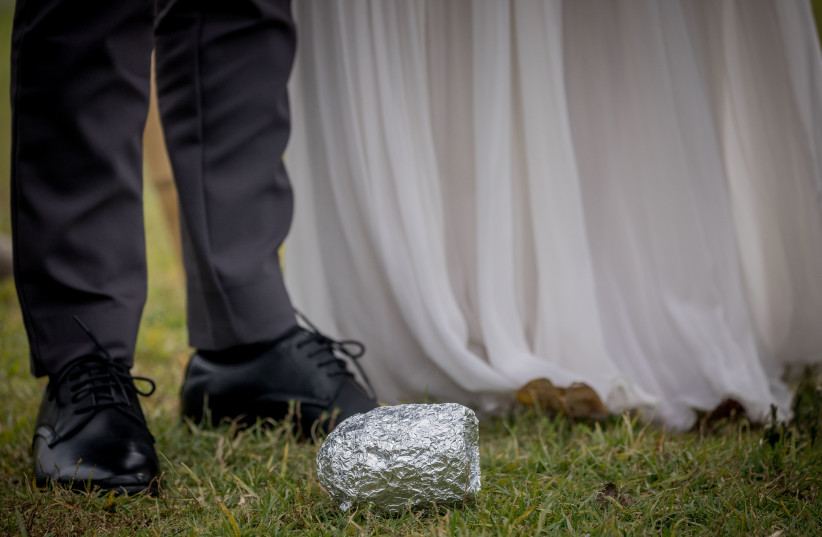We need to think about how to tackle Jewish intermarriage – editorial
A report by the London-based Institute for Jewish Policy Research (JPR) has brought the challenging issue of intermarriage back into the Jewish communal spotlight.
As reported by The Jerusalem Post’s Zvika Klein, the JPR report found that the global intermarriage rate is 26%, but there are stark differences between countries and subsets of the Jewish community.
In Israel, for instance, only 5% of Jews are married to non-Jews, while the figure jumps to 42% in Jewish communities outside Israel. The country with the highest level of intermarriage is Poland, where 76% of Jews are married to non-Jewish partners. The lowest level of intermarriage outside Israel is in Belgium, where only 14% of Jews are married to non-Jews. The US where intermarriage is perceived by many as being highly prevalent, hovers somewhere in the middle, at 45% – meaning, the majority of US Jews are still married to Jewish spouses.
Perhaps unsurprisingly, intermarriage levels are markedly higher among secular Jews than among more traditional segments of the Jewish community. In the US, for example, only 4% of Orthodox Jews reported being married to non-Jews, compared to a whopping 69% of Jews who identified as secular or “just Jewish.” Among those American Jews who identified as traditional or Conservative, 28% were married to non-Jews, compared to 45% of Jews who identified as Reform or progressive.
Age, too, appears to be a factor. While only 33% of non-Orthodox US Jews over the age of 65 are married to non-Jews, that figure nearly doubles to 65% among those between the ages of 18 and 29. Interestingly, the reverse is true in Europe: 41% of non-Orthodox European Jews over 65 are married to non-Jews, compared to 35% of those between 19 and 29.
 An illustration of a bride and groom during a Civil marriage outside the Knesset, the Israeli parliament in Jerusalem, December 9, 2020. (credit: YONATAN SINDEL/FLASH 90)
An illustration of a bride and groom during a Civil marriage outside the Knesset, the Israeli parliament in Jerusalem, December 9, 2020. (credit: YONATAN SINDEL/FLASH 90)How have Jewish communities handled intermarriage?
Jewish communities have developed different responses to intermarriage throughout the ages. While the Tanach documents multiple instances of Israelite men marrying non-Israelite women, the Talmud takes a strong stand against intermarriage, declaring that such a marriage was both prohibited and illegitimate unless the non-Jewish spouse converted to Judaism. In recent decades, Reform and Reconstructionist rabbis have started performing interfaith marriages and the Reconstructionist Rabbinical College started accepting rabbinical students with non-Jewish partners. Orthodox and Conservative rabbis do not, as a rule, perform interfaith marriages and continue to take a negative view of intermarriage, even as some engage in outreach to interfaith families.
Intertwined with debates over intermarriage are disagreements about the Jewishness of children born to interfaith couples – particularly those born to non-Jewish women – and concerns about Jewish continuity.
While some liberal Jewish denominations openly welcome interfaith families into the fold, more traditional segments of the community have found themselves torn between their understandings of halacha and views of intermarriage and their desire not to push interfaith families away.
Chabad, for example, while strongly discouraging intermarriage, nevertheless invests significant effort in engaging interfaith couples around the world. “We will do whatever we can to reach out to a Jew who may be in a mixed marriage,” one Chabad rabbi said. “But we need to be very clear about how Judaism defines a Jew.”
A statement by the US Conservative Movement asserts that “if our children end up marrying non-Jews, we should not reject them. We should continue to give our love…. Life consists of constant growth and our adult children may yet reach a stage when Judaism has new meaning for them.”
“However, the marriage between a Jew and non-Jew is not a celebration for the Jewish community.”
Regardless of one’s view of intermarriage, the JPR data make clear that it is a significant phenomenon that cannot be ignored but must rather be approached thoughtfully and sensitively. We are heartened to see the development of creative approaches to intermarriage that take into account contemporary reality, traditional understandings of halacha, the feelings of both Jewish and non-Jewish spouses, and the need to safeguard the future of the Jewish people.





Comments are closed.